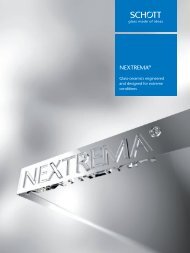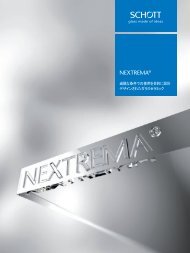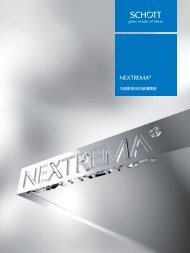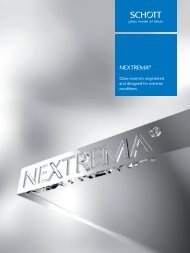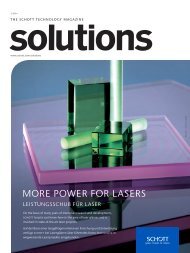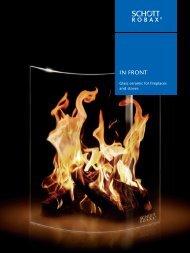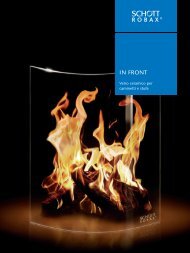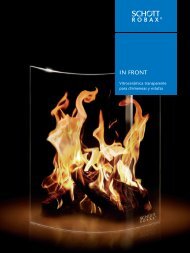SCHOTT Technical Glasses
Apart from its application in optics, glass as a technical material has exerted a formative influence on the development of important technological fields such as chemistry, pharmaceutics, automotive, optics, optoelectronics and information technology. SCHOTT Technical Glasses offers pertinent information in concise form. It contains general information for the determination and evaluation of important glass properties and also informs about specific chemical and physical characteristics and possible applications of the commercial technical glasses produced by SCHOTT. With this brochure, we hope to assist scientists, engineers, and designers in making the appropriate choice and make optimum use of SCHOTT products.
Apart from its application in optics, glass as a technical material has exerted a formative influence on the development of important technological fields such as chemistry, pharmaceutics, automotive, optics, optoelectronics and information technology. SCHOTT Technical Glasses offers pertinent information in concise form. It contains general information for the determination and evaluation of important glass properties and also informs about specific chemical and physical characteristics and possible applications of the commercial technical glasses produced by SCHOTT. With this brochure, we hope to assist scientists, engineers, and designers in making the appropriate choice and make optimum use of SCHOTT products.
You also want an ePaper? Increase the reach of your titles
YUMPU automatically turns print PDFs into web optimized ePapers that Google loves.
49<br />
α (20/300) [10 –6 K –1 ]<br />
Designation Compression ring Glass Interior lead<br />
Standard compression glass-to-metal seals 13 9 9<br />
Low-expansion standard compression<br />
glass-to-metal seals<br />
9 5 5<br />
Reinforced compression<br />
glass-to-metal seals<br />
18<br />
13<br />
9<br />
5 – 7<br />
9<br />
5<br />
Table 11. Expansion coefficients of common material combinations for compression glass-to-metal seals<br />
Glass<br />
no.<br />
8350<br />
8421<br />
8422<br />
8629<br />
8630<br />
Main<br />
applications<br />
Compression seals<br />
Seals with steels<br />
and NiFe alloys<br />
Compression seals<br />
Seals with steels<br />
and NiFe alloys<br />
Compression seals<br />
Seals with steels<br />
and NiFe alloys<br />
Compression seals<br />
Seals with steels<br />
and NiCo 2918<br />
Compression seals<br />
Seals with steels<br />
and NiFe alloys,<br />
increased requirements<br />
for electrolytic resistance<br />
and temperature stability<br />
α (20/300)<br />
Transformation<br />
temperature<br />
Tg<br />
Glass<br />
temperatures<br />
in °C at<br />
viscosities dPas<br />
Density t k100 log of the<br />
electric<br />
volumeresistivity<br />
in Ω cm at<br />
Dielectric<br />
properties<br />
at 25 °C<br />
for 1 MHz<br />
Chemical<br />
resistance<br />
classes<br />
[10 –6 1K] [°C] 10 7,6 10 4 [g/cm 3 ] [°C] 250 °C 350 °C DZ tanδ [10 –4 ] W S L<br />
9.0 520 708 1035 2.52 198 7.1 5.7 7.2 70 3 1 2<br />
9.6 525 721 1000 2.59 253 8.1 6.4 7.4 43 3 3 2<br />
8.6 540 722 1027 2.46 212 7.3 5.8 7.3 60 2 3 3<br />
7.6 529 720 1020 2.52 267 8.3 6.7 6.4 26 1 3 2<br />
9.1 440 660 975 2.53 317 9.3 7.6 6.5 21 3 1/2 2<br />
Table 12. Sealing glasses for compression seals<br />
9






